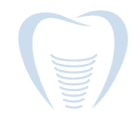Radiation to the head and neck is a common form of adjuvant therapy for treatment of cancer. There are about 30,000 cases of H&N cancer yearly. Radiation has a greater ability to destroy neoplastic cells while sparing normal cells. It also interferes with reproduction and cell maintenance of normal tissues including hematopoietic cells/epithelial cells/endothelial cells.
Radiation will impart effects on the oral mucosa, which can be divided into initial and long term. Initial effects are within the first 2 weeks and include: erythema to severe mucositis, pain and dysphagia leading to inadequate nutritional intake and loss of sense of taste. Long-term effects include: less keratinized epithelium, delayed healing, decreased tissue vascularity, and mucosal ulcerations.
Effects are also seen on salivary glands. The destruction is secondary to effects on the vasculature, with insult resulting in atrophy, fibrosis and degeneration. Manifestations of salivary gland injury include xerostomia: loss of protective enzymes to fight bacteria and increase in caries incidence. Treatment of xerostomia includes: hydration, saliva substitutes (glycerin), sugar-free gum and parasympathomimetic agents including Pilocarpine HCL.
Radiation effects on bone are due to the detrimental effects on the vasculature. Bone becomes virtually non-vital and is essentially incapable of self-repair. Sharp areas on alveolus ridge will not smooth themselves.
As the general dentist you want to evaluate the patient prior to radiotherapy and address the dental concern. Teeth with periodontal disease will worsen post radiation and they should be extracted. Patients with a good history of oral hygiene will maintain that in the future and we should retain as many of their teeth as possible. If patients have neglected their oral health for years, they will continue to do so. Immediacy of radiotherapy– at times emergent radiation is needed and cannot wait for extraction, in these situations the dentist and the patient need to work closely with each other to maintain the patient’s oral health as optimally as possible
In preparation for radiotherapy, we need to education the patient by reviewing oral hygiene measures, prophylaxis with topical fluoride, smoothen sharp cusps and fabricate custom fluoride trays.
If prior to radiation it is best to perform atraumatic exodontia, obtain primary soft tissue closure, smoothen all sharp bony areas and prophylactic antibiotics should be used. After the extraction, the patient should wait 14 days to begin radiation to allow for epithelialization to occur. If a patient has impacted 3rd molars they should be extracted if partially erupted and left alone if fully bony.
Caries in patients after radiotherapy should be immediately addressed. It is best to restore with amalgam or composite and not crowns, as it is difficult to detect recurrent caries.
An extraction after radiotherapy is up for questioning. Some practitioners feel it is best to do a RCT, coronoectomy and leave the tooth in place, while others will have the patient undergo hyperbaric O2 therapy. With hyperbaric O2 therapy, it is believed to increase local tissue oxygenation and vascular ingrowth. 20 dives prior and 10 dives immediately after the extraction is required. Studies have shown this will decrease osteoradionecrosis from 30% to 5.4%. It is always best to consult with the radiation oncologist.
It always best to have an oral and maxillofacial surgeon to care for these patients as they may need extensive follow up and care with wound management. Let Dr. Benjamin Yagoubian care for your patient with advances medical conditions.
Posted on behalf of
23451 Madison St #120
Torrance, CA 90505
Phone: (310) 373-0667
Monday - Friday 8AM - 5PM
